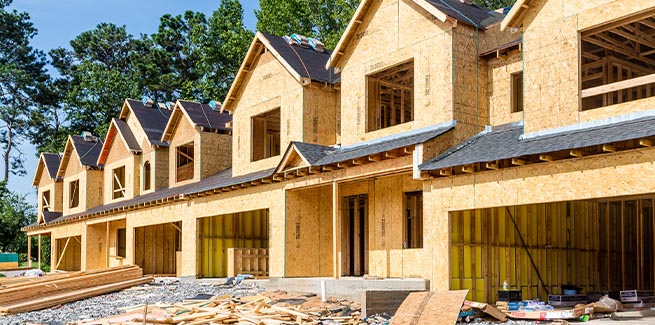A report from the National Housing Finance and Investment Corporation (NHFIC) has explored developer contributions, where councils or state governments charge developers for local infrastructure when they commence new constructions.
The funds are used for essential housing-related infrastructure such as water and drainage as well as social infrastructure that could include schools, parks and libraries.
The paper has compared developer contributions across states, finding that the charge usually accounts for around 8 to 11 per cent of total home construction costs.
The contribution cost can amount to between $25,000 and $85,000 per dwelling in NSW; $37,000 to $77,000 in Victoria; and $29,000 to $42,000 in Queensland.
After a government and industry consultation, NHFIC has suggested that developer contributions can be highly variable and unpredictable, warning they can lead to unanticipated costs throughout the development process and ultimately affect margins and housing supply.
Nathan Dal Bon, chief executive of NHFIC stated that the cost of funding local infrastructure has shifted from state governments and local councils to new home buyers.
“The expanding scope of developer contributions increasingly act like a tax on new housing, which can impede new housing supply and reduce housing affordability for buyers and renters,” Mr Dal Bon said.
According to the NHFIC, in states such as NSW, Victoria and Queensland, the contributions are now used to fund social infrastructure that had been traditionally funded by state budgets, such as schools and hospitals.
Of the Sydney councils analysed by the NHFIC, on average nearly two-thirds of all funds raised from developer contributions between 2017 and 2020 were earmarked for social infrastructure, while the remaining approximate third went to essential infrastructure directly linked to new housing.
Up to 88 per cent of developer contributions gained by those Sydney councils wound up being used for social infrastructure.
Most industry participants do not support the current developer contribution regimes that fund community, social or regional infrastructure, the report noted.
According to Kristin Brookfield, Housing Industry Association (HIA) CEO of industry policy, the Australian residential building industry contributes more than $36 billion in taxation revenue each year to federal, state and local governments.
The HIA has projected the sum equates to around 11 to 12 per cent of total revenue collected by all tiers of government.
“In almost all instances the development contribution models are complex to calculate and to administer. They introduce an element of uncertainty into the development process,” Ms Brookfield said.
“The consequence being protracted decision making leading to unnecessary holding costs for landowners and residential developers. Ultimately these costs must be passed onto the homebuyer and end up being carried through for the life of mortgage.”
The HIA reported that while NSW began shifting the majority of upfront costs onto new housing developments around two decades ago, other states follow suit and increasingly raise charges.
Ms Brookfield stated that upfront charges against new developments are the least efficient manner for governments to recover infrastructure costs, as they “significantly add” to the upfront cost of homes.
“It’s also a concern that state governments are now using this mechanism to add costs to new housing for infrastructure that clearly serves more people than just new home buyers each year,” she said.
However, a lack of comparable and detailed data on developer contributions at a state level is impeding policy evaluation, according to the NHFIC.
“Developer contributions are meant to operate like a user-pays model of delivering new local infrastructure because (in theory) the levies paid by developers help deliver housing-essential infrastructure that is valued and paid for by the new home buyer,” the report stated.
“In practice, ‘nexus’ developer contributions charges (that is, charges that pay for new essential infrastructure directly tied to new housing) are complex and difficult to calculate.”
The report also noted that local governments have struggled to keep up with increasing expectations of high quality local amenities and services as the population grows, but they have been held back by funding constraints.
“An aversion to debt and municipal rate caps, particularly in NSW and [Victoria], constrain local governments’ ability to fund good-quality local infrastructure,” the report said.
“This puts more pressure on the developer contribution system to raise revenue. Artificial funding constraints and debt aversion can raise the cost of delivering new local infrastructure as councils forgo borrowing at relatively low rates.”
A recent white paper from the Real Estate Institute of Australia (REIA) reported the proportion of family income needed to meet average mortgage repayments has risen to 35.7 per cent in 2021, from 27.2 per cent in 2001.
Tasmania has had the largest fall in housing affordability over the last 20 years, with the proportion of income needed to meet loan repayments rising from 18.4 per cent in June 2001 to 31 per cent in June 2021.
Housing affordability has declined faster in the regions compared to state capitals, amid a mass exodus out of cities, according to the HIA’s affordability index.
[Related: House price rise to top 20% in 2021: ANZ]
 ;
;
